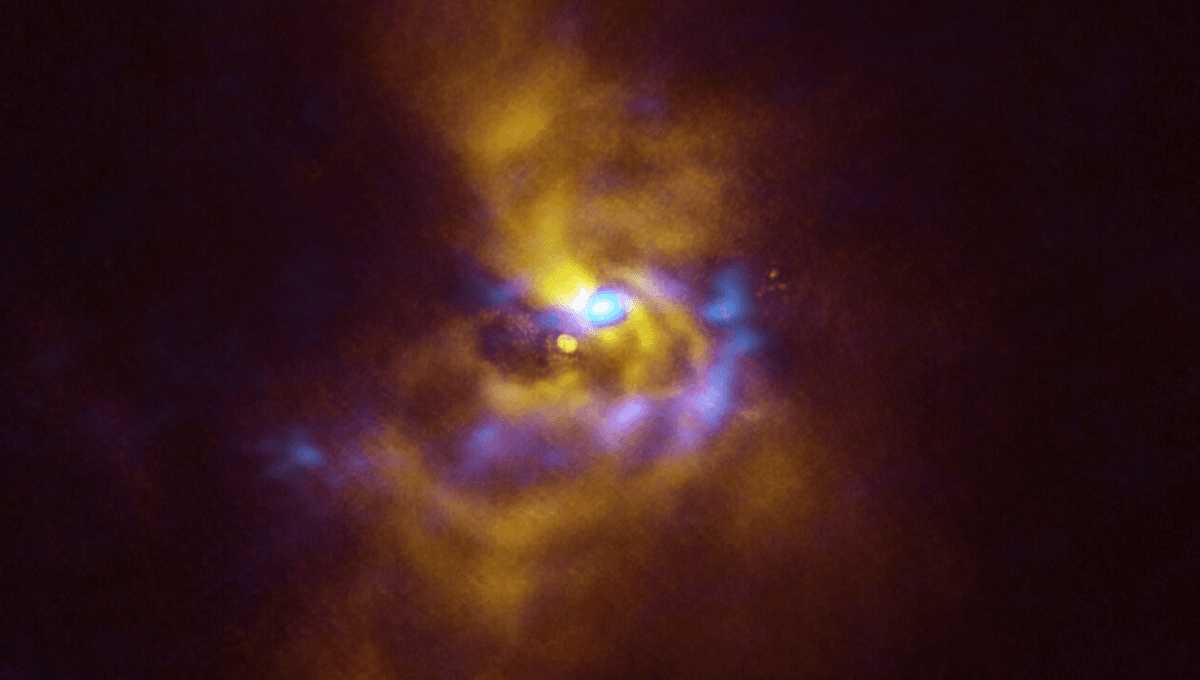
We have been spoilt with observations of young stellar systems lately. New images and studies have provided much-needed insight. After all, there is so much we don’t know about how planets come to be. The latest observations provide the first view of large dusty clumps, which are believed to be the source of future gas giant planets like Jupiter.
Calling the picture mesmerizing is an understatement. Baby star V960 Mon is surrounded by dust, moving in complex spirals. This was seen in detail by the European Southern Observatory’s Very Large Telescope (VLT). But that is not all. Using the Atacama Large Millimeter/submillimeter Array (ALMA), astronomers discovered that within the spiral arms, large clumps of material are forming, believed to be a stepping stone towards planets.
“This discovery is truly captivating as it marks the very first detection of clumps around a young star that have the potential to give rise to giant planets,” Alice Zurlo, a researcher at the Universidad Diego Portales, Chile who was involved in the observations, said in a statement. “With ALMA, it became apparent that the spiral arms are undergoing fragmentation, resulting in the formation of clumps with masses akin to those of planets.”
The formation of gas giant planets might happen in two ways. They can form through “core accretion“, where pebbles of material accumulate until they are large enough to snatch gas from the disk. Or, they might form through “gravitational instability”, where a large portion of the disk becomes unstable, contracting and then collapsing into a planet. There has been evidence of the former, but not much of the latter.
“No one had ever seen a real observation of gravitational instability happening at planetary scales – until now,” added lead author Philipp Weber, a researcher at the University of Santiago, Chile.
“Our group has been searching for signs of how planets form for over ten years, and we couldn’t be more thrilled about this incredible discovery,” added team member Sebastián Pérez, also from the University of Santiago.
V960 Mon is located 5,000 light-years away in the constellation of Monoceros. It was discovered in 2014 after it suddenly brightened by 20 times due to an outburst.
The study is published in The Astrophysical Journal Letters.
Source Link: Possible Birth Of Gas Giant Planets Seen In Extraordinary New Space Photo